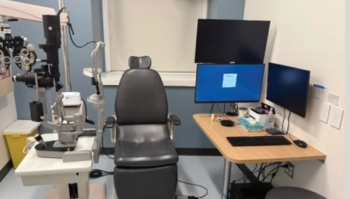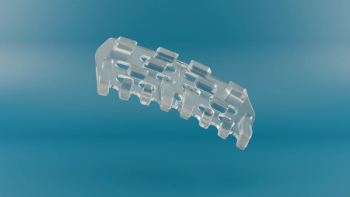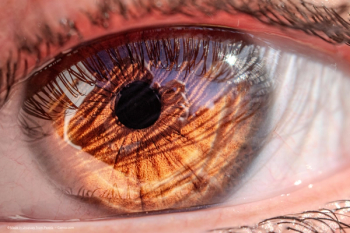
- Ophthalmology Times Europe December 2022
- Volume 18
- Issue 10
New goniotomy device + careful post-op care limits intraoperative bleeding
A new device for goniotomy has the advantage of an irrigation/aspiration system, which offers easier excision of the trabecular meshwork and better visibility. Dr Desai shares his experiences using the device as well as his tips and surgical pearls for success.
For two reasons, I often elect to perform goniotomy, also known as ab-interno trabeculectomy or goniectomy, on younger patients (under the age of 65) with mild, controlled glaucoma. Firstly, for better or worse, I often have patients who pride themselves in having researched premium cataract surgery options and glaucoma surgeries in preparation for their initial consultation with me.
At least once or twice a week, such a patient will call me to say that while they chose, for instance, a femtosecond laser-assisted cataract surgery with a toric IOL, they refuse the microstent that I am offering, because they are reluctant to add “more hardware” to their eye. The patient would rather continue on the two glaucoma medications they have been using.
Although I personally believe this is an unfounded concern, I cannot refer these patients to any peer-reviewed research on the risk of trabecular stents after 20 years. Also, I want to keep the nasal trabecular meshwork (TM) relatively spared to be available if future surgery should be required.
Secondly, because I accept nearly all insurances including Medicaid, certain payers will not provide prior authorisation for combined cataract surgery with trabecular stents, but they do authorise goniotomy. In either case, we miss a crucial opportunity for the patient to benefit from minimally invasive glaucoma surgery (MIGS) during their cataract surgery.
Fortunately, in both scenarios, I can perform a goniotomy at the time of cataract surgery. The “anti-hardware” patient is comforted that the procedure is safe enough to be performed on infants. The under-insured patient—who almost always gets coverage for goniotomy—will not get a surprise bill for an unpaid stent. In both cases, the goniotomy does not negate the possibility of future standalone glaucoma procedures.
Hyphaemas and reflux bleeding
I have been performing goniotomies since 2018, but I have had trouble with something that most surgeons would say is the biggest issue in this kind of procedure: hyphaemas. I am very concerned about prolonged hyphaema, having had several patients in whom I had to wash out the anterior chamber within a week in order to prevent worsening glaucomatous nerve damage.
Patients who experience prolonged postoperative hyphaemas are miserable. They have undergone this surgery in order to stop using eye drops, but the result is that they must return to the drops with worse issues than before. One-third of my patients undergo premium cataract surgery with a femtosecond laser or premium IOL or both, and they expect great results and are not prepared to tolerate hyphaema clouding their vision for 2 weeks after surgery.
I was first attracted to the devices TrabEx and TrabEx+ (MicroSurgical Technology) because of their potential to manage reflux bleeding. There are multiple elements of the design of these products that make this a possibility.
Focusing on the TrabEx+, it has an irrigation/aspiration system and its ability to provide irrigation enables the anterior chamber to remain pressurised. As I cut into the TM, the device aspirates and pulls it up, removing the need to push down on the tissue. Any blood along the way is vacuumed up, providing crystal clear vision with zero blood reflux while the procedure is underway.
The smooth footplate allows me to pass the sharp tip of the device through Schlemm’s canal, pulling the TM towards me so that it is not necessary to posteriorly push down deeper into the canal. It is a clean-cut excision of the TM with no reflux and no lacerated tissue of the TM left over (Figure 1).
Visibility is fantastic, both because the chamber is maintained and because blood reflux is aspirated along the way. This makes the goniotomy procedure easier, less stressful and even quicker in my experience.
In any goniotomy, you may see a little hyphaema. I tell my patients that I want to see a little blood because it means I have achieved passage through the collector channels. This small hyphaema is managed easily.
In addition to using the aforementioned device, I have three tips for avoiding hyphaema:
1. Put the patient in reversed Trendelenburg position with the entire table tilted at a 20–30° angle, which helps reduce the episcleral venous pressure within Schlemm’s canal.
2. Keep the eye slightly pressurised, with an mmHg in the 20s at the end of surgery. I have been surprised that what I used to think was “too firm” a pressure was actually only in the teens. To become more accurate at learning my tactile pressure with a more objective measure, early on, I started using the Terry-Kratz modified Barraquer tonometer (Ocular Instruments), which we traditionally use during Alcon Optiwave Refractive Analysis.
3. Tell patients to sleep upright, at a 30–40° angle, the first night. Because I have had various patients suffer from postoperative hyphaemas after sleeping upright but with their head tilted down, I give them the rule, “Keep your eye level above your chin, and your head level above your heart.”
Another technique that can help is patching the eye, which puts more pressure on it and can work as a reminder to patients that they have had surgery, need to be careful and should follow my instructions.
Surgical pearls for success
I recommend that one is gentle when performing the goniotomy. We surgeons can be quite used to pushing and hugging the canal as we cut along the TM. With the TrabEx+, it is not necessary, as the tip is so sharp the aspirating function pulls the tissue up as you move along.
It is not a case of “scooping up” the meshwork; it just “floats” into the tip. If any resistance or turning of the device is felt, then the surgeon may have gone too far posteriorly and is hitting the outer wall of Schlemm’s canal (Figure 2).
Regarding patient selection criteria, I do not do any kind of goniotomy on patients on blood thinners. Aspirin at a dosage of 81 mg is fine, but if the patient is on a prescribed anticoagulant, I do not perform the procedure.
Conclusion
MIGS is evolving rapidly, and when considering what is best for patients in terms of safety profiles and efficacy, it is not sufficient to continue using the same traditional stents and tube shunts procedures for lowering IOP. The beauty of the TrabEx+ is that it is a decades-old concept that uses cutting-edge technology. It blends the best of a proven safety record and a novel way of performing goniotomy.
If one has struggled with hyphaemas before, then this is the device to try. With its good technique, visibility and great outcomes, it has one of the easiest learning curves of any of the MIGS devices. Let this be your introduction into the extended world of MIGS.
Rajen U. Desai, MD, FACS
E: [email protected]
Dr Desai is a glaucoma specialist at the Witlin Center for Advanced Eye Care, New Jersey, United States. He is a consultant for Ocular Therapeutix, Bausch & Lomb, Iridex, Sight Sciences, Ivantis, Alcon, MicroSurgical Technology, AbbVie and New World Medical.
Articles in this issue
about 3 years ago
The truth about invisible posterior vitreous structuresabout 3 years ago
Optimising the ocular surface to achieve good vision after surgeryabout 3 years ago
2023: What ophthalmologists in Europe anticipate for the year aheadabout 3 years ago
What patients do and don't know about stem cell therapyNewsletter
Get the essential updates shaping the future of pharma manufacturing and compliance—subscribe today to Pharmaceutical Technology and never miss a breakthrough.







































